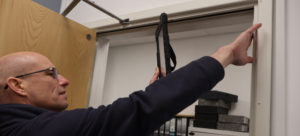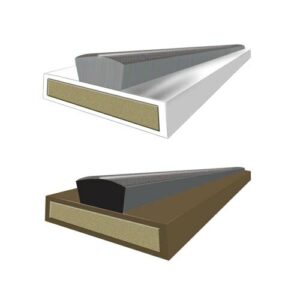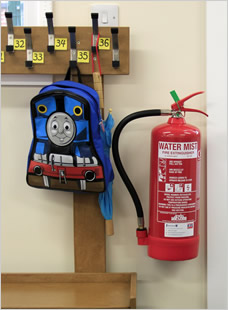Tuesday 20th March 2012
Fire doors play a critical role in preventing the spread of smoke and fire, protecting lives and also properties. However, the effectiveness of fire doors depends heavily on their maintenance, including having well-maintained fire door seals. Over time, fire door seals can deteriorate, become damaged or no longer meet safety standards, which leads to a key question; should you retrofit or replace them?

Can you modify a fire-rated door?
Any modifications to your fire door, including structural changes, should be carried out strictly in accordance with the manufacturer’s instructions and only by an accredited and competent individual. Any modifications to your fire door could affect its certification. Regular maintenance on fire doors is essential to ensure the doors are up to specification and still effective. BSI recommend that fire door inspections should be caried out every 6 months, but this guidance may need to be adapted depending on the location of the door, the fire risks that exist and the amount of use it has. In residential high rise blocks, Fire Safety (England) Regulations 2022 states fire doors should be checked more regularly; our help guide provides further information on this. Intumescent strips should be inspected within this check to ensure they effectively seal against fire and smoke, forming a secure barrier.
 Safelincs offer fire door seals for fire and smoke protection. Both use intumescent material that expands in a fire to seal the gap. Smoke protection seals also have a brush to block smoke before the intumescent material is activated. Smoke seals are rarely omitted, one occasion is when doors lead to areas without smoke detectors, triggering alarms in circulation areas.
Safelincs offer fire door seals for fire and smoke protection. Both use intumescent material that expands in a fire to seal the gap. Smoke protection seals also have a brush to block smoke before the intumescent material is activated. Smoke seals are rarely omitted, one occasion is when doors lead to areas without smoke detectors, triggering alarms in circulation areas.
Fire door seals are fitted on three sides of a fire door, leaving the bottom gap uncovered. There are products available to prevent smoke from escaping under doors if necessary.
Drop down smoke seals offer a fast and convenient solution. They function with a graduated scissor action, dropping to the floor to prevent smoke passing through. For retrofitting, surface mounted drop down smoke seals are an alternative option, as they require no routing or rebating.
How to replace fire door seals and can you retrofit intumescent seals?
Fire door seals can be replaced or retrofitted with intumescent seals depending on the condition of the door. Rebated intumescent fire door seals can be fitted where a rebate exists or the current seal is damaged. The seals are fitted into the existing rebates either in the door leaf or frame. However, modifying rebates requires a certified professional, as it may impact the fire door’s certification.
To avoid having to cut a rebate in either the door or the frame, surface mounted fire door seals can be fitted. These are applied easily by sticking to the frame or door with their self-adhesive backing.
If you are unsure on the condition of your fire doors, a fire door inspection allows a qualified inspector to assess your fire doors, ensuring they are fit for purpose and will provide adequate protection against fires. A clear report is provided indicating in detail which doors are compliant and where further action is required.
Can you retrofit intumescent seals?
Yes, you can retrofit intumescent seals; following a fire risk assessment, doors are sometimes re-designated as fire doors if the door and frame are substantial enough to be justifiably counted as a nominal fire door. The same applies to older fire doors which do not follow the latest specifications. In these cases, fire door seals can be retrofitted.
Do fire door seals need to be replaced?
Fire door seals do not need to be replaced unless they are damaged, missing, or ineffective. Intumescent seals do not degrade with age in day-to-day circumstances. Regular inspections can identify issues, and replacements must follow manufacturer guidelines or be done by a certified professional to ensure compliance with fire safety standards.

